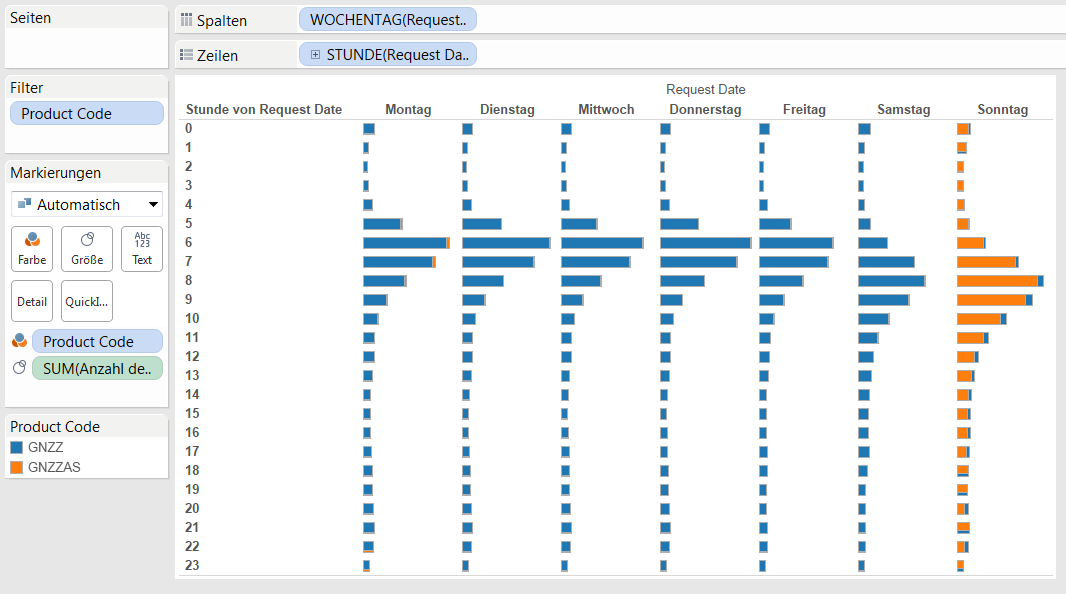Data transparency and responsiveness at Neue Zürcher Zeitung

A Swiss-media staple since 1780, the Neue Zürcher Zeitung (NZZ) is synonymous for high-quality publishing and a liberal world view. Its goal is to report current events, explore topics of interest, and deliver information to the public. The media group stands for freedom of information and decisiveness of action. The increase of digitalization brings risks and opportunities alike, and the media industry is no exception. The NZZ data analysis team, led by Markus Barmettler, used a Microsoft Excel-based reporting solution in combination with ad-hoc analysis when necessary. In October 2014, the team replaced its system in an effort to be able to quickly react to market opportunities and chose to migrate to a modern Tableau solution. Today, 35 people in the marketing and product departments use Tableau analyses and dashboards to:
- Discover irregularities and quickly take corrective action.
- Quickly recognize readers’ topical preferences and optimize editorial content accordingly.
- Analyze completed and running marketing campaigns by target audience, appeal, offers, and timing.
Markus Barmettler, Head of Analytics and Market Research at the NZZ competence center for data-driven and analytical value generation, says the user feedback is positive: “We highly appreciate the flexibility, simplicity, and performance of our new Tableau solution.”
The fastest way from data to insight
Before the NZZ team could reap the rewards of new and profitable insights, it needed to redefine and automate its in-house data collection process. “As we were coming from an Excel-based reporting system, we needed to first set up a data warehouse,” says Barmettler. “Once we had laid that foundation, though, we were ready to go. With Tableau Desktop, we were able to efficiently explore our data after just one day of introduction.” NZZ regularly analyzes a variety of local and online data sources based on SQL Server, IBM BigInsights, Adobe Analytics, flat Excel files, Amazon S3, and Apache Spark on Amazon EMR, among others.

Tableau dashboard showing load on the NZZ’s technical platform for the delivery of ePapers.
We highly appreciate the flexibility, simplicity, and performance of our new Tableau solution.
The goal: self-service business intelligence
Tableau brings flexibility and a range of capabilities, adding value to the NZZ on a daily basis. “The main advantage is how efficiently we can do our daily data analysis work. Tableau offers a wealth of native connectors for various data sources. You can also combine data, or do data extracts, which helps a lot in speeding up ad-hoc analysis. It’s all very efficient,” says Barmettler. The successful implementation of the new analytics solution inspired NZZ to plan an expansion and start its own training program to build up the skills of its staffers. “Our goal is to enable each department to independently perform their own ad-hoc analyses. In short, we are aiming for self-service BI. This will make us even faster and help us to retain or even increase our edge over the competition,” says Barmettler.
Having Tableau as a great tool for quickly analysing new data sources is extremely helpful. We don’t have to set up an entire ETL process to gain insights from the data.
Being able to use native connectors to connect to virtually any data source and make everything available for analysis, was a welcomed feature of Tableau. “Having Tableau as great tool for quickly analysing new data sources is extremely helpful. We don’t have to set up a whole ETL process to gain insights from the data. Now we verify the value of the data first and only then automate data processing and integrate it into our data warehouse,” adds Barmettler. Using this method, Barmettler’s team recently discovered the high-value of download counters and usage statistics of their ePapers offered online. This information hadn’t been considered all too important before. Integrating Tableau into the automated analytics processes allowed the team to generate daily insights about its target audience and their preferences.